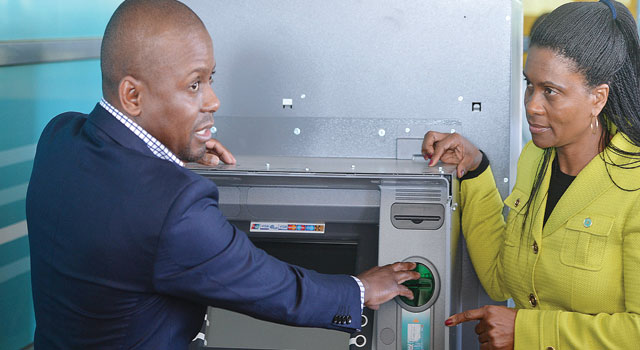First National Bank of Botswana (FNBB) last week released its unaudited financial results for the half year ended 31st December 2014 and seems to be pleased with its performance. The bank is of the view that it has delivered a fair set of results for the half year considering the prevailing economic conditions.
“Despite the challenging environment, it is pleasing to note that the bank’s balance sheet grew by 11% to P17.9 billion from P16.2 billion in December 2013. Advances to customers grew by 16%, reaching a new high of P12.6 billion. This growth came from Property Finance, Wesbank and RMB term loans,” the bank said in a statement issued immediately after the announcement of the results.
It said it has maintained its conservative credit risk appetite and the growth in advances is predominately in secured asset classes. “In order to achieve the level of growth in advances, the bank had to actively manage its liquidity position amid increasing liquidity pressures in the market. The bank was successful in this regard and managed to grow deposits from customers by 11%, thus maintaining its leading position in market share. The efficiency of the bank’s balance sheet improved as witnessed by the Bank of Botswana certificates reducing by 25% year-on-year as the liquidity in the market tightened leading to an increased loan-to-deposit ration,” it said.
It further said notwithstanding growth of 16% in advances, combined with a decline of 25% in BOBCs, total interest income and similar income grew by 2% which is a result of the prudent approach taken by the bank to grow its assets in more secure asset classes which typically exhibit lower yields, saying the strategy will help preserve the income-generating ability of the book in the future.
FNBB said the increase in cost of funding in the market has led to a 15% increase in interest expense. “Impairment of advances increased by 55%, which reflects the bank’s prudent provisioning methodology. Given the current stress in the market, the bank has maintained a more stringent credit assessment process. The bank has seen a significant increase in transaction volumes which has translated into an 11% increase in non-interest income. The increase in volumes is predominately from the introduction of innovative banking solutions such as the recently launched automated Deposit Taking Machines, Rand-dispensing ATMs, pre-paid electricity via cell phone banking channel and the recently launched *174# payment solution. This growth in non-interest income has been achieved without any increase in bank charges,” it said.
It concluded by noting that focus was placed on ensuring that cost containment was realised through rationalisation of service providers as well as standardisation of prices for consumables. “Overall, this adoption of procurement best practice assisted the bank in curtailing costs which only increased by 6%. As a result of the above, profit before tax posted a 5% year-on-year decline with key metrics remaining strong, with acceptable level of return on assets being at 4% and return on equity at 31%,” it explained.

